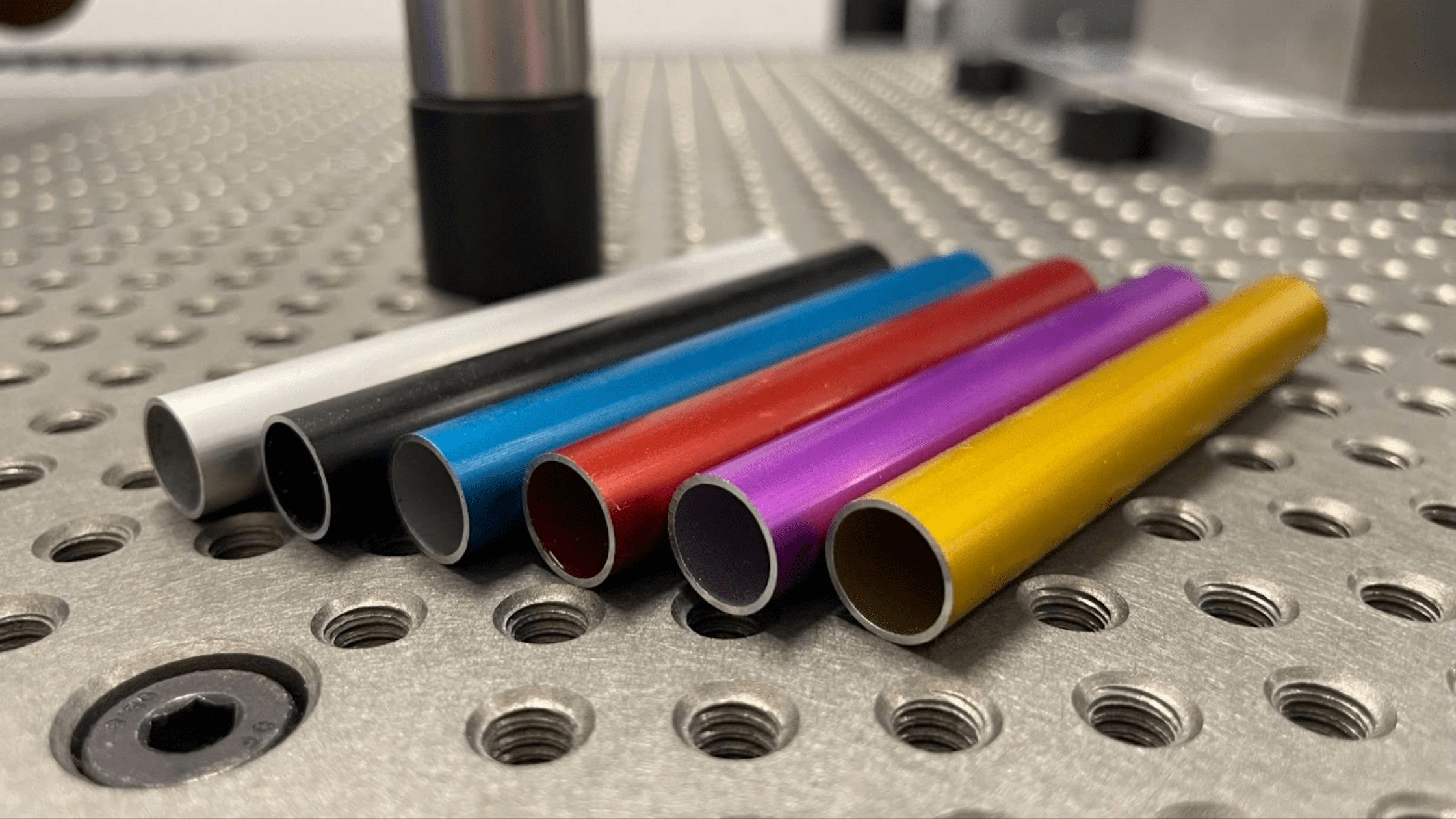When designing precision aluminum components, choosing the right anodizing process can significantly impact product performance, durability, and appearance. Two of the most common anodizing types—Type II and Type III—each offer distinct advantages depending on your application. Understanding the key differences between Type II and Type III anodizing will help you make informed decisions when specifying finishes for aluminum parts. Both Type II and Type III are compliant with Mil-A-8625 specification.
What Is Anodizing?
Anodizing is an electrochemical process that forms a durable oxide coating. It enhances the cosmetic look of extruded aluminum, eliminates corrosion, and improves wear resistance. While both Type II and Type III involve creating this oxide layer, their characteristics—and ideal uses—differ significantly.
Type II Anodizing: Durable, Decorative, and Lightweight
Overview:
Type II anodizing is a sulfuric acid anodizing process that creates a moderately thick oxide layer of 0.0002” to 0.001” (typically 0.0008″ thick). It’s often used for decorative purposes or where light abrasion protection is required.
Key Benefits:
- Aesthethics:
- Accepts color dyes well, making it ideal for cosmetic or brand-driven components.
- Clear anodize is used for many industrial applications and is slightly less expensive.
- Scratch Resistance: Sufficient for most indoor and light outdoor applications.
Typical Applications:
- Consumer electronics
- Aircraft interiors (surface is typically brushed and then anodized)
- Medical devices
- Instrument panels
- Enclosures or housings
Type III Anodizing (Hardcoat): Built for Performance and Endurance
Overview:
Type III anodizing, also known as hardcoat anodizing, uses a similar sulfuric acid process under more rigorous conditions—lower temperatures and higher current densities. This results in a much thicker oxide layer 0.001″ to 0.004″ (typically 0.0015” thick)
Key Benefits:
- Superior Wear Resistance: High hardness makes it suitable for components exposed to heavy friction or abrasion.
- Enhanced Corrosion Protection: Excellent for demanding environments such as salt spray, marine, or high-humidity conditions.
- Electrical Insulation: Offers improved dielectric strength.
- Color Range: Light gray to black
Best Applications:
- Linear slides
- Military hardware
- Valves, pistons, and moving parts
- Industrial machinery
Choosing the Right Finish for Your Application
- Aesthetics + moderate protection? Choose Type II for a balance of color options and corrosion resistance.
- Maximum durability + abrasion resistance? Opt for Type III Hard Coat for high-wear and harsh-environment applications.
At Profile Precision Extrusions, we partner with you to specify the optimal anodizing solution—whether that’s a crisp, colored Type II finish or the rugged performance of a Type III hard coat.
Have questions or need a custom quote?
Get in touch with our team today, and let’s discuss the best anodizing finish for your next extrusion project.


